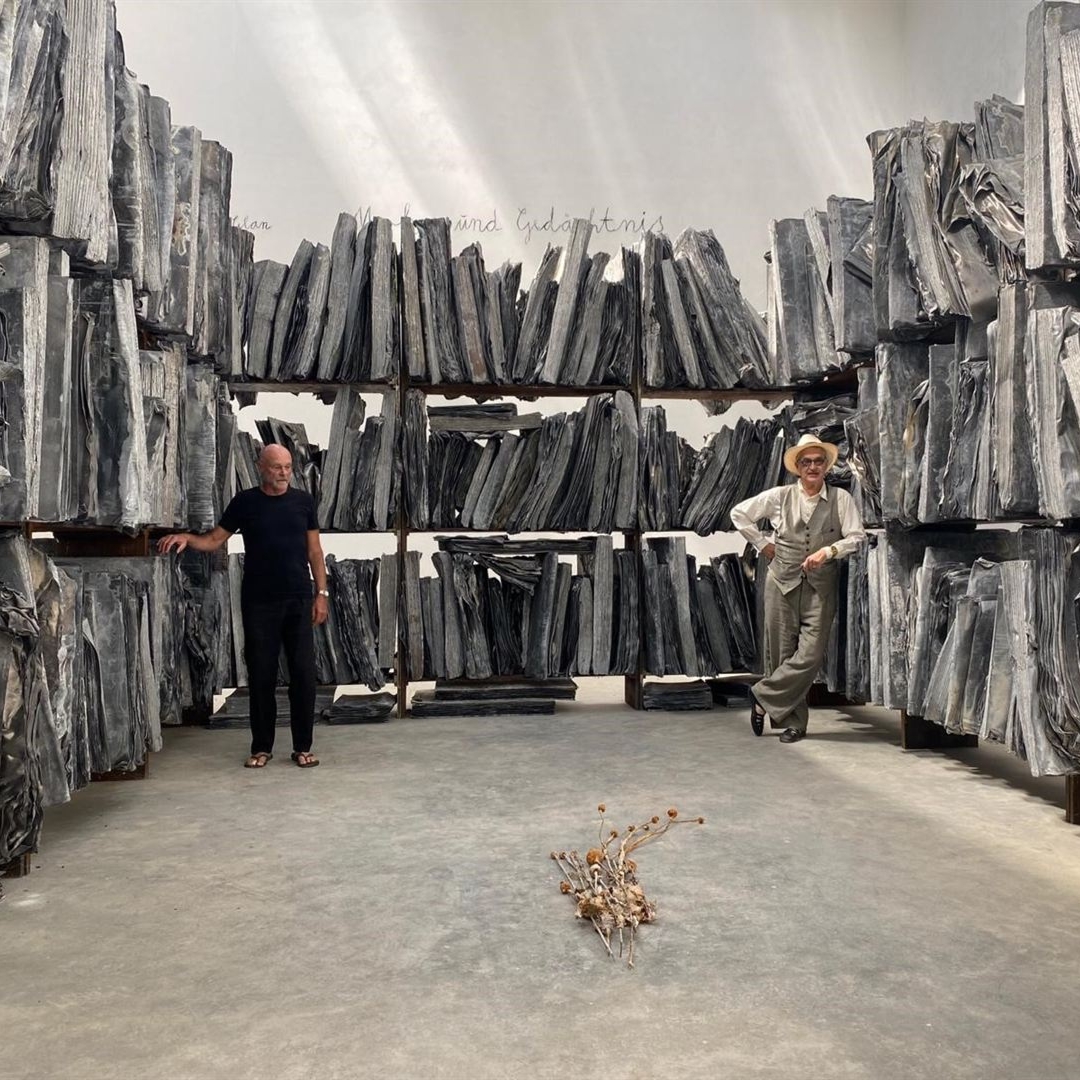Wim Wenders and Anselm Kiefer
A walk along the ashy paths of Wim Wenders and Anselm Kiefer
Anselm Kiefer's titanic canvases, sculptures, installations and converted buildings have an eschatological monumentality. Saturated with ash, sand, chalk, wood, metal and hair, they evoke the violence and destruction that were omnipresent in German history in the mid-twentieth century.
In his documentary Anselm (The Sound of Time), Wim Wenders films the artist at close quarters with his colossal works, burning with a blowtorch or pouring metal with construction machinery.
He was born in 1945 in Donaueschingen, in the almost mythological landscape of the Black Forest, a few kilometres from Freiburg im Breisgau. He studied art on the same campus where Martin Heidegger ended his career. The philosopher of nothingness, who had converted to Nazism, would become a recurring motif in the artist's work, as he grappled with Germany's past.
In 1969, Anselm Kiefer made his deafening debut on the art scene with a series of performances entitled Occupations. At a time when Germany had put a leaden lid on the Second World War and the Holocaust, the young artist photographed himself giving the Nazi salute in several European cities, to confront Germany with the mirror of its hypocrisy. Misunderstood, he was accused of apology for fascism for using figures and myths exploited by the Third Reich, such as that of the poet Hölderlin, whereas he was seeking to debunk this appropriation.
He painted to understand history, but also that of his family and his father, an officer in the Wehrmacht. On one of his canvases, he drew a diagram: at the top, "Himmel", the sky; linked by an arrow to "Erde", the earth, at the bottom. And in the centre: "malen", to paint. As if painting were the only way of understanding being in the world.
Despite rejection in his homeland, Kiefer had his first retrospective exhibition at the Art Institute of Chicago in 1988, aged just 43, and the American press called him the greatest living artist.
Like Anselm Kiefer, Wim Wenders was born in 1945, in a Germany determined to rebuild from the ruins. The artists shared an aesthetic of no-man's-land, of chaos, and of man's place in the midst of the explosions of history. Known for his fictional masterpieces "Paris Texas" and "Wings of Desire", filmed in a Berlin split in two, Wim Wenders is also a great art documentarian. Whereas he embraced the lightness of dance in "Pina" or the warmth and spontaneity of Cuban musicians in "Buena vista social club", here Wim Wenders embraces the austere, disquieting and grandiose atmosphere of Kiefer's works.








